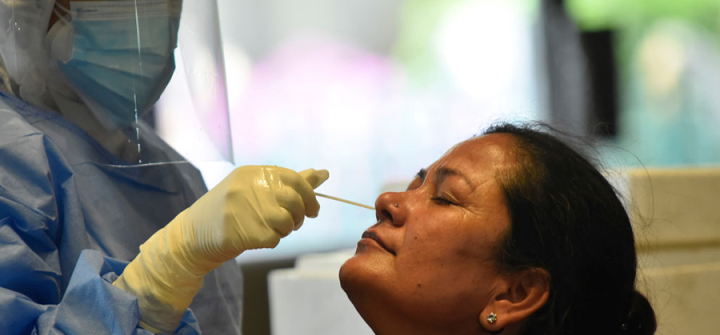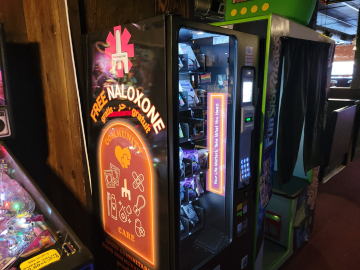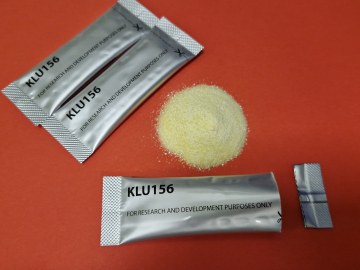Help Wanted: Digital Innovations to Bridge Diagnostic Gaps
Raise your hand if you’ve experienced a far-reaching nasal swab at least once in the last 12 months.
While perhaps eye-watering, the swab used for a polymerase chain reaction assay is part of a decades-long diagnostic revolution. Although COVID-19 has made “PCR test” a household name in much of the world, the reality is that diagnostic testing remains the biggest gap in the “care cascade”—the series of steps people go through to access health care. Basic diagnostic capacity is available in only 1% of primary care clinics in some low- and middle-income countries.
With so much of the global population lacking timely and reliable access to the right diagnostic tools, the digital solutions boom must be leveraged to bridge inequity in access to diagnostics and care. For example, bringing digital screening and diagnosis tools closer to people is imperative to improving health outcomes and expanding access to services in LMICs. Communities, governments, and diagnostics stakeholders cannot arrive at efficient, data-driven digital health solutions, without first identifying the gaps those solutions can bridge.
FIND and the Eureka Idea Consortium conducted an assessment from March to July 2020 to identify critical diagnostic gaps—and the digital health solutions that could contribute to addressing them—across 4 LMICs with varying digital infrastructures and needs (Peru, India, Nigeria, and Uganda).
Of particular interest were diagnostic gaps affecting the earliest stages of the care cascade when health information and preventive care are sought. Though the study had been designed to focus on diagnostic gaps for HIV/AIDS, diabetes, tuberculosis, and other diseases, the COVID-19 pandemic soon became a key indicator of the future direction of digital diagnostic solutions. This includes their use to facilitate decentralized diagnostic approaches like user-friendly chatbots and telemedicine, a rise in wearables and at-home tests, new scopes of epidemiological surveillance, responsive data governance frameworks, data-visualization tools for decision support, and interoperable solutions linking screening to lab testing.
Baseline findings from the 2020 assessment found echoes in the COVID-19 context. By using country reported data to highlight real-world diagnostic gaps, the assessment can help drive more equitable access to reliable diagnosis via digital innovation (including for COVID-19 diagnosis and case management).
Following are key features identified by the assessment as having the power to transform access to diagnostics across the study countries and other LMICs (based on 60 expert interviews, 500 patient surveys, and literature review):
Digital solutions provide a way to bring diagnostics closer to people. Accessible tools can optimize resources and be deployed in diverse geographic and health care settings.
User-centered digital health solutions can improve early access to health information. An example is HealthConnect, which was inspired by an existing, pre-pandemic health communications platform. A suite of tools used for COVID-19 communication and risk passports in South Africa, HealthConnect uses WhatsApp business software and a chatbot platform to communicate instantly with users’ smartphones and relevant government agencies. This allows users to interact with systems that streamline contact tracing, provide on-demand information on vaccines and testing, and deliver screening passports for access to re-opened schools, etc.
Digital health solutions can enable broad preventive screening at primary health care centers and/or bundling of basic tests. Clinical decision support tools like the Integrated eDiagnosis Approach mobile app digitalizes clinical protocols to guide health workers step by step from running diagnostic tests based on symptoms, to heath care decisions based on test results. Bundles of point-of-care tests using clinical decision support can help manage fever for children under 5, for instance, where dengue tests can be added to test bundles along with screening and testing for malaria.
Digital tools provide clinical decision support and enhance health care worker knowledge and skills. As a complement to health worker expertise, these tools can improve the accuracy of diagnosis, build patient trust, and subsequently strengthen the patient-provider relationship.
Interoperability standards and solutions allow devices and systems to share information securely. This ability is essential to ensure that diagnostic data are not obscured in siloed tools but are available for public health response and allow health care workers to view a patient’s full health history, including their diagnostic results.
Evaluation of digital tools for diagnostics is crucial to ensure they are fit for purpose and in line with global and national policies and needs. Collaborative studies involving international partners, ministries of health, and local communities are necessary to inform how digital health tools are developed, implemented, and scaled up—noting impact, successes, and challenges.
As the world increasingly embraces digital tools to close diagnostic gaps, governments, donors, stakeholders, health workers, and communities must take these considerations into account and scale up digital solutions. Increasing equitable access to effective diagnostic and testing services is the first step to ensuring that care cascades serve individuals and meet them where they are.
Rigveda Kadam, MBA, is head of Digital Access at FIND, the global alliance for diagnostics. As part of her work, Rigveda has worked with national and local governments, private sector laboratories, pharmaceutical and diagnostic device manufacturers and other development sector partners for increasing access to key commodities and services targeted at improving public health outcomes.
Oommen John, MD, MBA, is a senior research fellow at the George Institute for Global Health, New Delhi, India, where he leads the India Health Accelerator Programme and his research involves evaluating the role of digital health interventions in improving clinical outcomes. He is a fellow of the International Academy of Health Sciences Informatics, a member of the WHO Digital Health Guidelines Development Group and ITU-WHO focus group on Artificial Intelligence for Health. He serves on the International Advisory Board of Commonwealth Centre for Digital Health and scientific advisory committee of FIND, the global alliance for diagnostics.
Join the 50,000+ subscribers in 170+ countries who rely on Global Health NOW summaries and exclusive articles for the latest public health news. Sign up for our free weekday newsletter, and please share the link with friends and colleagues: https://www.globalhealthnow.org/subscribe
A Nepalese health worker takes a nasal swab of a parliamentary lawmaker for a coronavirus PCR test in Kathmandu on May 5. Image: Narayan Maharjan/NurPhoto via Getty




